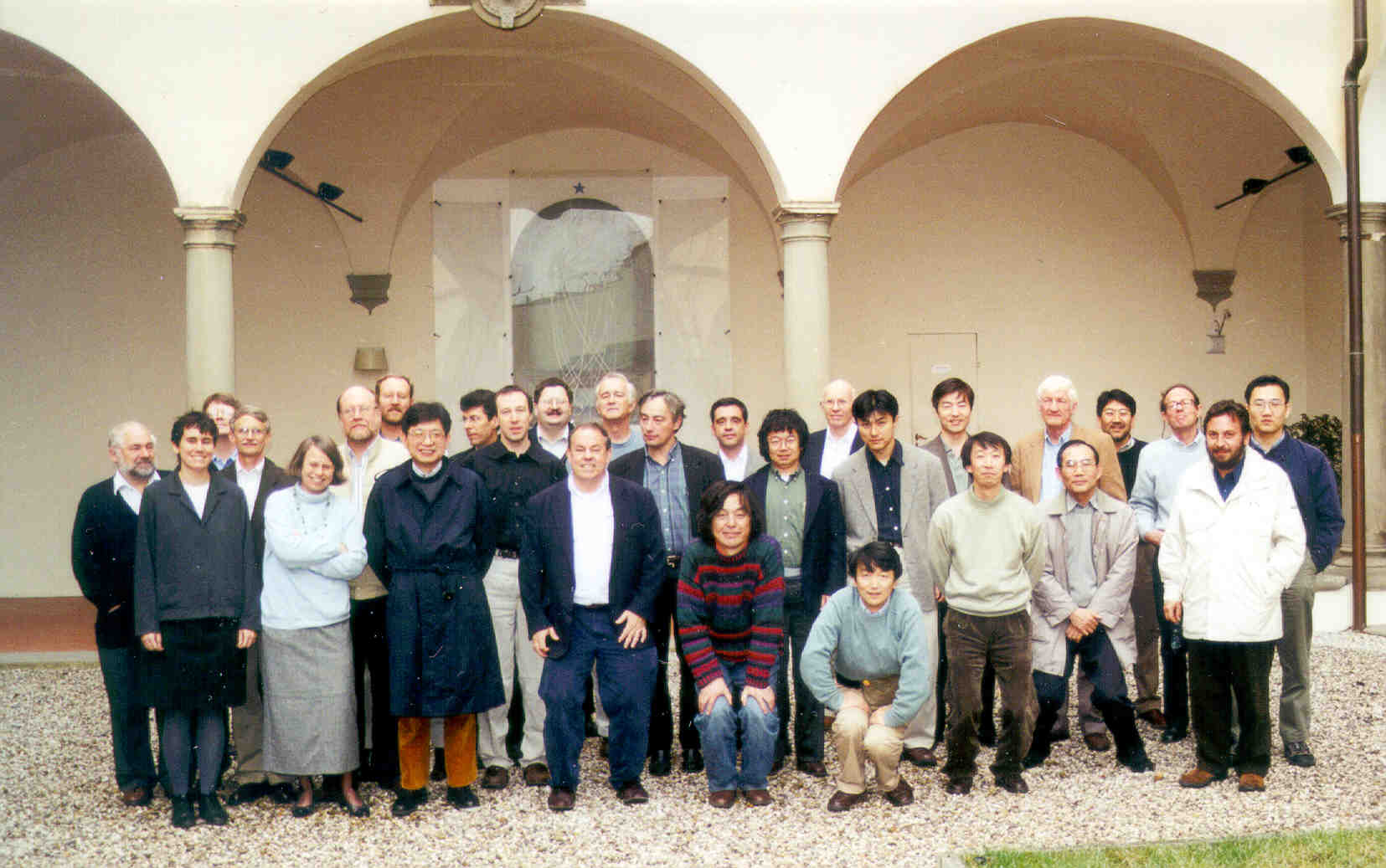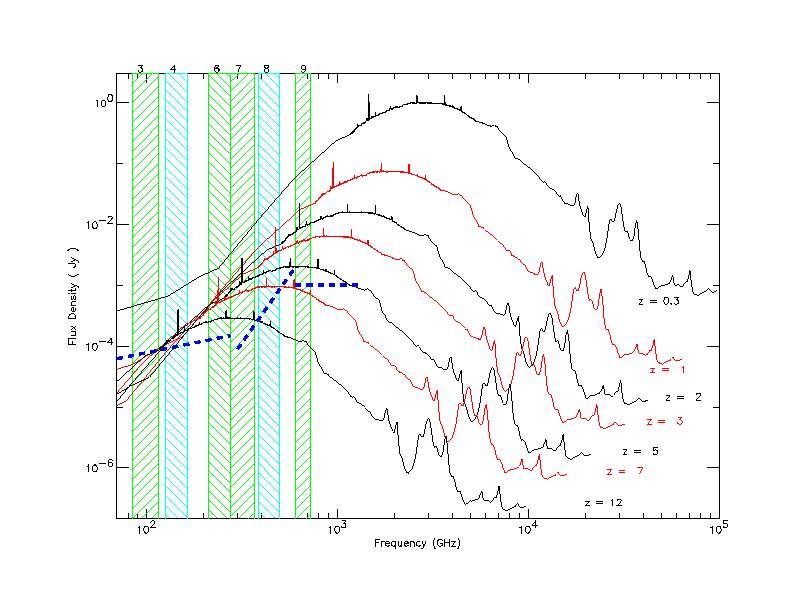

Conference Date: May 17-2001 (Thursday)
Here's the dial-in information for the telecon:
Conference Date: 31 May 2001
Conference Time: 10:15 AM EASTERN TIME=14:15 UT
Conference Duration: 1 hr
Service Level: STANDARD
Call Type: MEET ME/DIALOUT
USA Toll Free Number: 800-619-2487
Non-USA Number: +1-712-271-0012
PASSCODE: ALMA
Conference Leader: Mr Al Wootten
Agenda items so far include:
Old Business
(1) Please approve the minutes of the first May Meeting.
New Business
(1) - Issues from E-AEC -- (Guilloteau, Brown, Kurz, Ishiguro, Kawabe, Rafal)
(2a) - Bands 1, 4 and 8 Science Cases -- Richer, Yun, Yamamoto
Please read the preamble to the Science Case for Band 1, 4 and 8.
Please read the Science Case for Band 1.
Please read the Science Case for Band 4. Also see Min's SED plot . The
plotted curves are SEDs of Arp220 redshifted as noted. I increased the
luminosity by a factor of 4 so that it is more consistent with the
text. The thick dashed curves are 5 sigma detection limits
after 1 hr of integration time, using the Tsys estimated
by Stephane in his SSB-DSB draft memo.

Also see Pierre's SED plot . This figure is based on a complete spectrum of M82 which I have recently compiled with a student (Alexandre Beelen). Observer-frame spectrum of a $\rm 4 \times 10^{12} L_{\odot}$ galaxy (based on the observed spectrum of M82 - which includes the ISO LWS and SWS spectral data and all available (sub)millimeter and radio measurements) at increasing redshifts from $z=0.3$ to 12, for a cosmology where $H_o = 50 \rm km s^{-1} Mpc-1$, $\Omega_0=1$ and $\Omega_\Lambda=0$ (from Beelen \& Cox, in prep.). The strongest emission line is the [C{\small II}] fine-structure line at 158~$\rm \mu m$. The positions of the ALMA Bands are shown by hatched areas. The thick dashed curves are 5 sigma detection limits after 1 hour of integration time, using the Tsys estimated in memo number~**.

For an example of astrochemical aspects of the band, Barry Turner submits: "Turner conducted a highly sensitive spectral survey of the 2mm band (129 - 171 GHz) during 1993 - 1998. The survey is of seven objects: SgrB2OH, SgrB2N, W51M, Ori(KL), Ori-S, W3(IRS5), and IRC10216, with partial coverage of G34.3+0.1. RMS noise level is typically 4 mK, spectral resolution is 768 kHz (1.5 km/s at mid-band), and beam size (FWHP) is 42" at midband. It is the most sensitive mm- wavelength survey yet made, and comprises the most objects. A total of 17,000 lines has been detected, and code has been written to calculate the spectra for the many molecular species detected in the ISM but not covered in the Lovas and JPL catalogs, as well as a very large number (~1000) of additional species of potential interstellar relevance which have been taken from the chemical literature. Software development is also under way to extract the differences in chemistry and excitation that characterize each object. The survey has been prepared for presentation on the web and also in hardcopy form for publication."

Please read the Science Case for Band 8.
(2b) - Future Correlator Science -- Bachiller, Scoville, Yamamoto
Please read the case from Baudry's group.
Thoughts from Project Scientists:
(4) - Receiver phase/pathlength stability requirement -- Guilloteau
Please read Stephane's note.
(5) - Canadian software proposal -- Wilson
(6) Next Teleconference -
The EACC will meet in Munch on 11-12 June to examine plans incorporate
Japan into the Project planning. The results of this meeting may
be discussed at the next teleconference, nominally 14 June at 1415UT.
(3) - 2SB SSB DSB Receivers
Gems from the Memo Series: